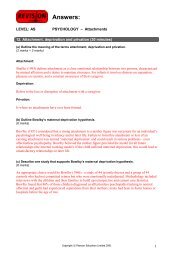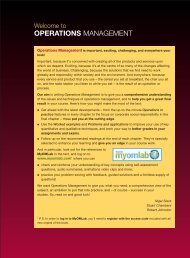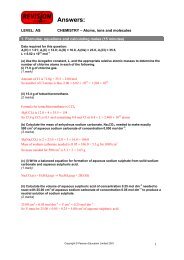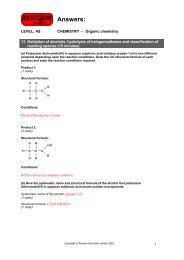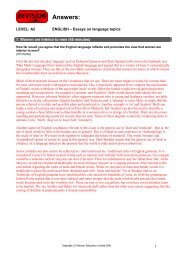The Dove Campaign for Real Beauty - Pearson
The Dove Campaign for Real Beauty - Pearson
The Dove Campaign for Real Beauty - Pearson
Create successful ePaper yourself
Turn your PDF publications into a flip-book with our unique Google optimized e-Paper software.
Part 1 Marketing nowJohn Browne, chairman of giant oil company BP, asked this question: ‘Is genuine progressstill possible? Is development sustainable? Or is one strand of progress – industrialisation –now doing such damage to the environment that the next generation won’t have a world worthliving in? Browne sees the situation as an opportunity. BP broke ranks with the oil industry onenvironmental issues. BP once stood <strong>for</strong> British Petroleum. That changed to Beyond Petroleum.‘<strong>The</strong>re are good commercial reasons to do right by the environment,’ says Browne. Under hisleadership, Beyond Petroleum has become active in public <strong>for</strong>ums on global climate issues andhas worked to reduce emissions in exploration and production. It has begun marketing cleanerfuels and invested significantly in exploring alternative energy sources, such as photovoltaicpower and hydrogen. At the local level, BP recently opened ‘the world’s most environmentallyfriendly service station’. 29Some companies have responded to consumer environmental concerns by doing only what isrequired to avert new regulations or to keep environmentalists quiet. Enlightened companies,however, are taking action not because someone is <strong>for</strong>cing them to, or to reap short-run profits,but because it is the right thing to do – both <strong>for</strong> the company and <strong>for</strong> the planet’s environmentalfuture.Figure 2.1 shows a grid that companies can use to gauge their progress towards environmentalsustainability. At the most basic level, a company can practise pollution prevention. This involvesmore than pollution control – cleaning up waste after it has been created. Pollution preventionmeans eliminating or minimising waste be<strong>for</strong>e it is created. Companies emphasising preventionhave responded with ‘green marketing’ programmes – developing ecologically safer products,recyclable and biodegradable packaging, better pollution controls and more energy-efficientoperations.Figure 2.1 <strong>The</strong> environmentalsustainability gridSOURCE: Harvard BusinessSchool Publishing. Reprinted bypermission of Harvard BusinessReview, figure of <strong>The</strong>Sustainability Portfolio, from‘Beyond Greening: strategies <strong>for</strong>a sustainable world’ by StuartHart, Jan–Feb 1997. Copyright© 1996 by the Harvard BusinessSchool Publishing Corporation;all rights reserved.90




